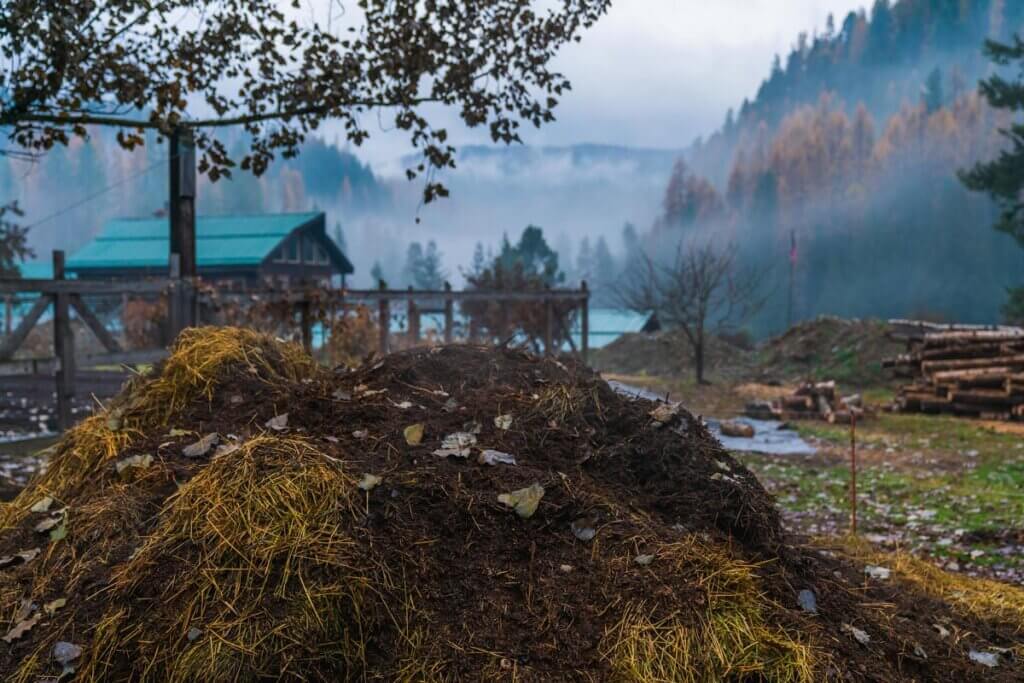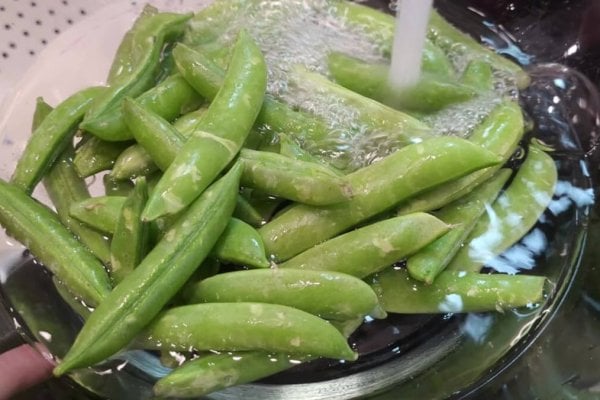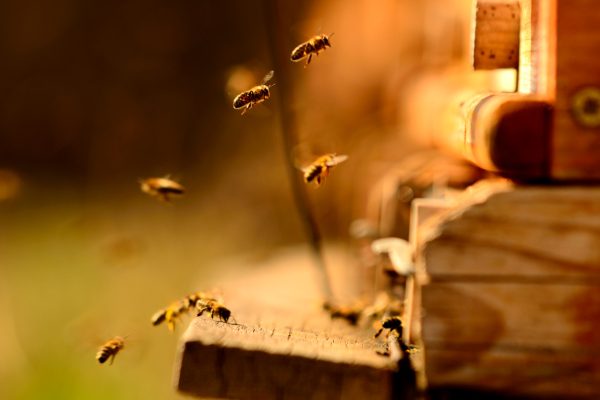
This compost tea recipe is a superpower elixir teaming with microbes (such as fungi, bacteria, and yeast) that boost the health of the soil for plants, flowers, lawns, vegetables and fruit trees to thrive. Let’s get brewing!
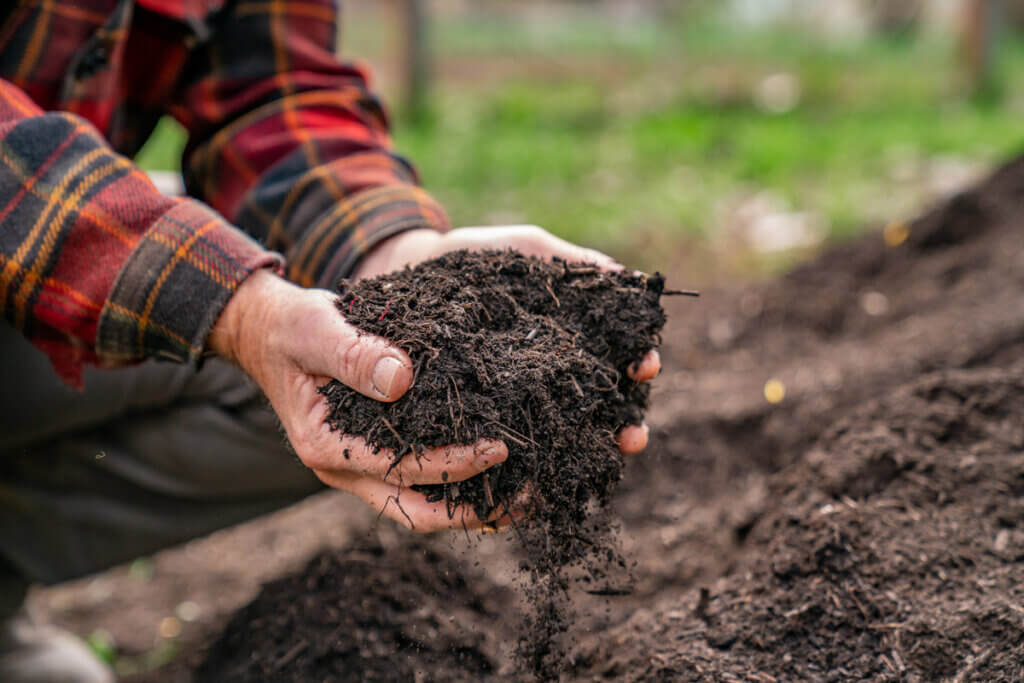
Composting on the Homestead
Before making home-brewed organic compost tea, it’s important to understand how to make compost and how to use compost. Knowing how often to turn compost, common composting troubleshooting tips, and questions such as, “Can I compost meat?” need to be answered.
Even if you don’t make your own compost, this knowledge will help you recognize what you are looking for when you source quality compost for brewing compost tea.
Compost tea has become quite popular recently and is an excellent way to build healthy soil using permaculture principles.
This approach is something I am so passionate about that I developed a permaculture for your homestead class, educating others on how to use the permaculture method in a practical and easy-to-understand way.
There are some permaculture mistakes you’ll want to avoid, and this informative class teaches the basics of permaculture design and the right way to use it to organize your property’s permaculture zones to make your homestead and garden produce more with less effort.
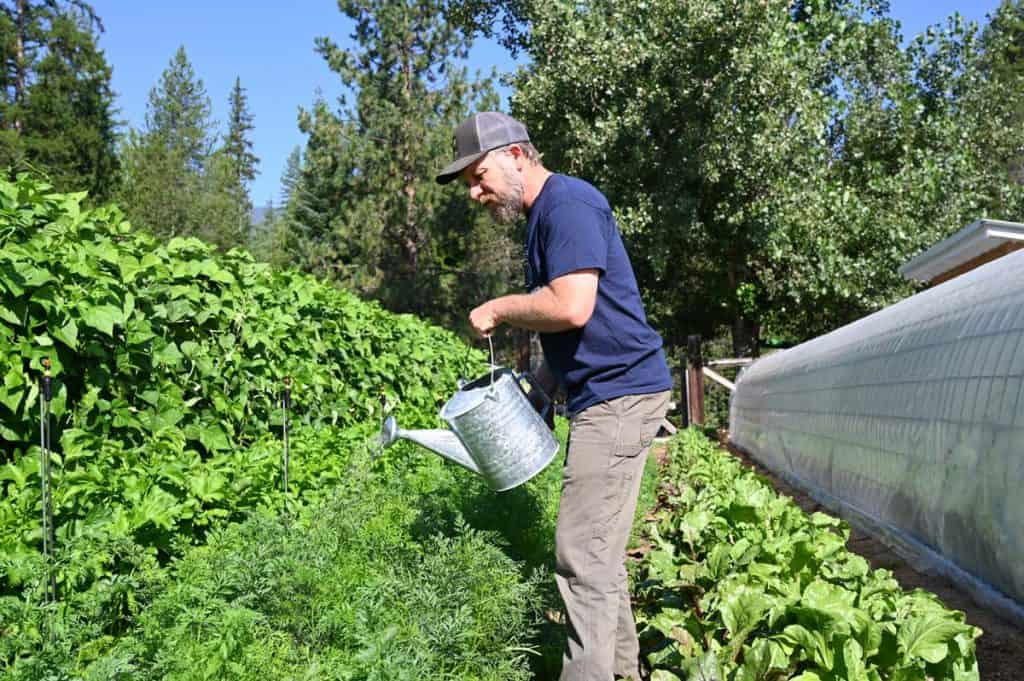
What Is Compost Tea
Compost tea recipes are not to be confused with the excess water draining from a compost pile. This anaerobic concoction is full of microbes that can be harmful to your plants.
True compost tea is intentionally “brewed” and extracted into a liquid compost concentrate that improves soil structure by supporting its microbiome. Unlike an organic fertilizer that only feeds the plants, compost tea feeds the soil, which is a more sustainable way to nourish your plants.
There are two different methods for making compost tea: aerated compost teas and unaerated compost teas.
Aerated
The aerated method is based on the principle that oxygen added to the brewing process will feed and encourage the microbes to multiply quickly. This rapid increase of good microbes keeps the undesirable ones from reproducing, allowing the finished compost tea to remain in a healthy balance.
Unaerated
The unaerated method allows the compost to steep in undisturbed water extracting the nutrients and microbes. You might be inclined to use this simpler technique, but it’s not recommended. The undesirable organisms may not be kept in check, making inconsistent results.

Benefits of Compost Tea
Like tending to the microbiome of your gut health can boost your immune system, tending to the soil’s microbiome will boost the soil’s health and the health of the plants you grow in that soil.
Compost tea inoculates the soil with beneficial microorganisms, promoting the plants’ ability to absorb nutrients. This helps plants grow stronger and faster while preventing the infestation of some pests and diseases they can be susceptible to while growing.
The soil’s water retention is increased with the application of compost tea, making it a great addition to your garden watering strategies.
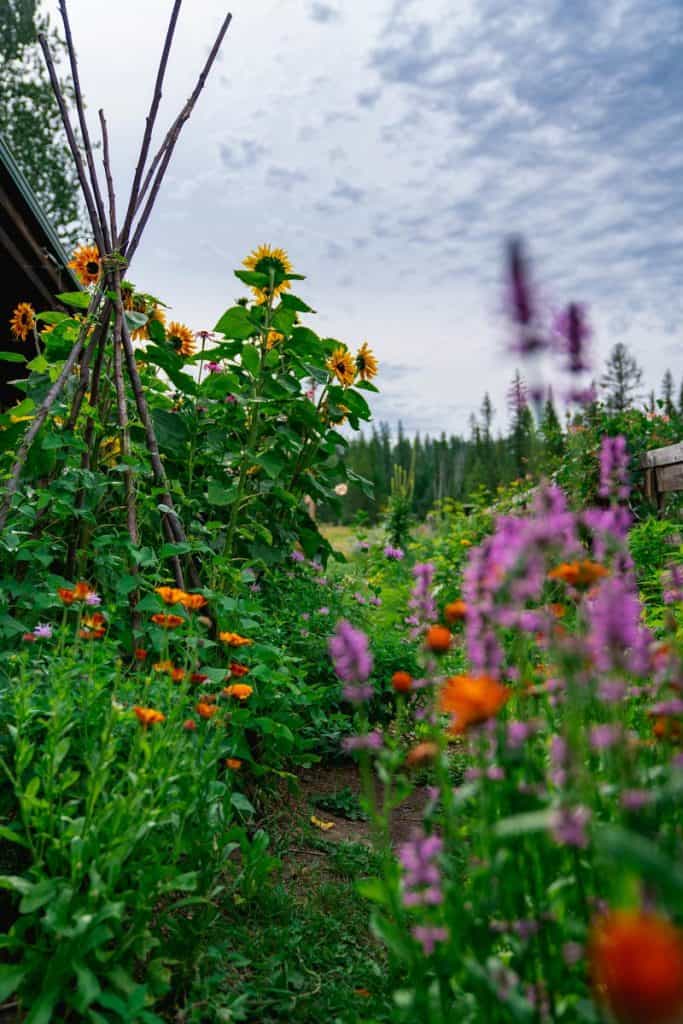
What Plants Like Compost Tea
A variety of plant life benefits from compost tea in one way or another. Mature trees, shrubs and perennials prefer a tea rich in fungi. Annual flowers, herbs, grasses and vegetables prefer a bacteria-rich tea.
You can test the soil to see what it needs, but all plants can benefit from the microbes and nutrients in this super brew.

Supplies Needed
- Compost – Using your own homemade compost is ideal, but you can also purchase compost or worm castings to create compost tea. 1-2 pounds should be sufficient for this recipe.
- Water – Tap water, rainwater, or well water work as long as it is non-chlorinated. Chlorine kills off microbes! If you only have access to chlorinated water, fill the bucket and let it sit for 24 hours until the chlorine evaporates. Homesteading Hack: One-quarter teaspoon of vitamin C powder per 5 gallons of chlorinated water will kill off the chlorine in less than an hour. Give it a rigorous stir, or use an aerator for 10 minutes. Vitamin C is a nutrient that plants can benefit from as well.
- Add-Ins – Compost tea can be customized to promote bacterial or fungal dominance. In general, bacterial teas are best for annual plants, and fungal teas work well for perennial plants.
- Unsulphured Molasses – Molasses is a food source to encourage the fermentation process and promotes the multiplication of beneficial bacteria. A little goes a long way; just one teaspoon of molasses is sufficient.
- Fish Emulsion – Fish emulsion encourages fungal growth for a fungal-dominant tea. Fish emulsion is highly concentrated and can burn your plants if not properly diluted. Just two teaspoons is sufficient.
- Azomite – Azomite is a mineral made from volcanic soil and ash and used as a fertilizer to promote the growth of bacteria and fungi in your tea. Use 1 ½ tablespoons for this recipe.
- Bonemeal – Need a phosphorus boost? Add one tablespoon of homemade bonemeal per gallon of prepared compost tea and apply as usual.
- Bucket – A 5-gallon bucket with a handle works well, providing a manageable amount of compost tea concentrate.
- Compost Tea Bag – These work on the same principle as brewing a cup of herbal tea. Many companies make compost tea bags, and they can easily be found online. Homesteading Hack – You can repurpose an old burlap sack if you don’t have a compost tea bag.
- Aerator – Aerators can be found online or at farm and hardware stores. Ensure it includes a plastic hose long enough to stay in the bucket.
- Sprayer – Backpack-style sprayers hold a gallon or two of water and efficiently spray the tea where needed. A water vessel with a pour spout is helpful around the plant base, and using a spray bottle for leaf foliage works well.

How to Make and Apply Compost Tea
- Fill your compost tea bag with compost or worm castings and close the opening.
- If using azomite, molasses, and/or fish emulsion, dilute them separately in water before adding them to the bucket.
- Fill your bucket three-quarters of the way full with non-chlorinated water.
- Connect the air stones to the aerator with the tubing.
- Submerge the air stones to the bottom of the bucket.
- Turn the aerator on to create steady bubbles going through the water.
- Lower your compost tea bag into the water, and fold the string closure under the bucket handle to secure it in place.
- Allow to “steep” or “brew” for 24 hours.
- Dilute compost tea with equal parts water and use immediately.
- Pour the tea around the base of your plants, spray it onto foliage with a spray bottle, or spray it on the lawn with your larger outdoor sprayer. Homesteading Hack – Applying compost tea to your garden, flowers, lawn and trees in the cool of the morning or evening is best. Heat and direct sunlight could stress your plants or burn the leaves.
And there you have it. Now you have the power to harness naturally occurring microbes to support the biome of your soil so that your garden can flourish without relying on chemical fertilizers.
Interested in more permaculture gardening tips? In this free permaculture for your homestead download, I share my top tips along with a simple-to-understand explanation of the 12 principles of permaculture and how to apply permaculture to your homestead now!
